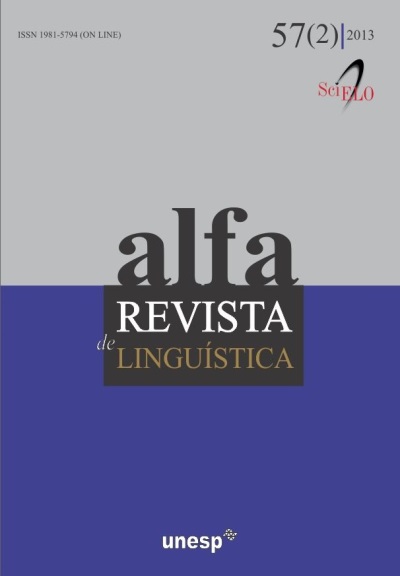Selective transfer in the acquisition of english double object constrctions by brazilian learners
Keywords:
Cross-linguistic influence, Selective transfer, Double object constructions, Bilingualism,Abstract
The present study investigates the acquisition of the English double object constructions (GOLDBERG, 1995) by Brazilian learners. We hypothesize that, due to first language (L1) influences, the prepositional ditransitive construction (John gave a book to Mary) will be acquired earlier, while the ditransitive construction (John gave Mary a book) will be part of the learner’s interlanguages (SELINKER, 1972) only at the advanced level of proficiency. We also hypothesize that learners may transfer (ODLIN, 1989) the placement of the object pronoun in pre-verbal position from their L1 to their interlanguage in early stages of acquisition (João me deu um livro / *John me gave a book). We test our hypotheses by comparing the performance of three groups of learners (beginning, intermediate, and advanced) and native speakers of English on an acceptability judgment task used as a measure of learnability and generalization. Results confirm the order of acquisition of the English double object constructions predicted for native speakers of Brazilian Portuguese. Moreover, results suggest that, although mother tongue influences may have taken place, they do not do so pervasively, but rather selectively, corroborating the proposal by Kellerman (1983).Downloads
Download data is not yet available.
Downloads
Published
28/08/2013
How to Cite
ZARA, J. V.; OLIVEIRA, F. L. P. de; SOUZA, R. A. de. Selective transfer in the acquisition of english double object constrctions by brazilian learners. ALFA: Revista de Linguística, São Paulo, v. 57, n. 2, 2013. Disponível em: https://periodicos.fclar.unesp.br/alfa/article/view/5291. Acesso em: 6 dec. 2025.
Issue
Section
Papers
License
Manuscripts accepted for publication and published are property of Alfa: Revista de Linguística. It is forbidden the full or partial submission of the manuscript to any other journal. Authors are solely responsible for the article's content. Translation into another language without written permission from the Editor advised by the Editorial Board is prohibited.

